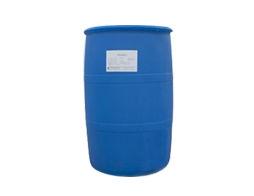Compared with chemical surfactants, biosurfactants have the advantages of biodegradability, low toxicity and simple production by microbial fermentation. They have a wide application prospect in red tide control. Rhamnolipid biosurfactants produced in the culture of Pseudomonas aeruginosa have strong antibacterial activity. At the concentration of 1.0-3.0mg/l, it significantly inhibited the growth of Prorocentrum in the East China Sea in the delay period. For algae cells in exponential phase, when rhamnolipid was added, the concentration was 15.0 and 20.0mg/l
After 2.25h, broken algae appeared under the microscope. After 5.25 h, most of the algal cells were broken, and the unbroken algal cells became spherical or left only cavities. No algal cells were observed after 10.25 H.

When the concentration of rhamnolipid increased to 4mg / L, 7Mg / L and 10mg / L respectively, it could completely inhibit the growth of Trypanosoma, Alexandria Tama and Prorocentrum minimus, and the inhibition effect on marine Prorocentrum was weak. At the concentration of 5mg / L, the growth inhibition rates of Trypanosoma, Alexandria Tama, Prorocentrum and Prorocentrum miniforme were 81.14%, 48.64%, 4.95% and 88.0% respectively within 9 days. The inhibitory effects on the growth of different dinoflagellates were Prorocentrum in the East China Sea > Trypanosoma, Prorocentrum minutum > Alexandrium Tama > marine Prorocentrum > eurocentrum.
Alkyl glycoside surfactant (APG) can be synthesized from plant resources. It has broad-spectrum antibacterial activity, rapid and complete biodegradation and no pollution to the environment. When the concentration of APG was higher than 2.5mg/l, it significantly inhibited the growth of Prorocentrum dentatum. When it increased to 10.5mg/l, it had a strong killing function on the algal cells. When the concentration is higher than 5.0 mg / L, it also shows an obvious inhibitory effect on the growth of algal cells in different bays of red tide. For example, if the concentration is higher than 20.0 mg / L, it can effectively kill algal cells in different bays of red tide, and the damage to algal cells is irreversible.
Scallops have strong water filtering ability. Large scale culture will reduce the biomass of phytoplankton, change the species composition, intercept and recycle organic matter and nutrients, thus affecting the biogeochemical cycle. Dinoflagellate is the dominant species outside the culture area, while the dominant position of dinoflagellate in the culture area is replaced by diatom, and the cell density of dinoflagellate is lower than that of the control point all year round, and the lowest is only 1 / 15 of that of the control point. The results are similar to the research results that the abundance of dinoflagellate in the floating plant community is significantly reduced in the bay with a large number of oysters in South Carolina. This is because dinoflagellates are easy to be ingested by a single cell, which may lead to strong feeding pressure of scallops on dinoflagellates.
In addition, the content of fatty acids in dinoflagellate cells is higher than that in diatom cells, and the diet with high fat content can promote the feeding rate of scallop, which may lead to stronger feeding selectivity of scallop to dinoflagellate.